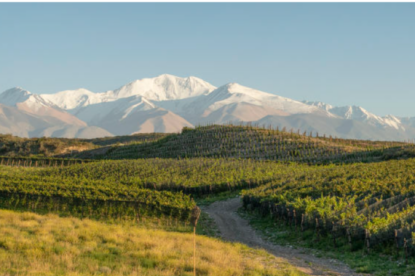With almost 500 years of storied winemaking history, Chile is most known for its wine diversity and one-of-a-kind sustainability initiatives. Chile’s dedication to innovation has driven the country to create the wine world’s first-ever Sustainability Codes, ensuring that local wineries produce responsibly and protect the environment and the community. The Sustainability Code for the Chilean Wine Industry (SCWI) was officialized in 2011 and includes 351 individual requirements divided into four categories that cover viticulture practices, vinification and bottling, community management and education, and wine tourism.
With a vast array of terroirs between the Pacific Ocean, the Coastal Mountain range, and the Andes, Chilean producers cultivate high-quality, expressive and sustainable wines. Below are 12 wineries leading the way of Chile’s sustainability efforts.

Concha y Toro
A leader in sustainability, Concha y Toro became the first Latin American company to commit to science-based greenhouse gas emission reduction goals. To date, they have achieved a 27% decrease in the winery’s carbon footprint compared to 2014.
El Aromo
Viña Aromo believes in the organic production of grapes and wines, and is committed to caring for both the environment and workers. They implement collaborative work environments that make room for new ideas and approaches to wine production.
Escudo Rojo
Certified sustainable, Escudo Rojo commits to the code and uses natural compost as fertilizer, organic products to combat natural pests and diseases, and solar panels for renewable energy. Additionally, drop irrigation is used in 75% of the vineyard.
La Playa
La Playa wines have always been farmed sustainably with little to no pests, but since being certified sustainable they have reduced water consumption by over 2.5 million liters, which is equivalent to 25,000 showers per day.
Los Vascos
Viña Los Vascos believes all waste from the winemaking process has the potential to be reused, recycled or recovered. The wines are mostly packaged (more than 99% of material) with recyclable materials and 143 acres are certified organic.
Montes
Montes’ approach to sustainability focuses on community management. By continuing education for workers they empower local Chileans to obtain their diplomas. To date, more than 110 workers have finished their studies to an eighth grade or secondary level.

Natura
Organic and biodynamic agriculture is important to Natura, who promote the health of their vineyards by working with organic grapes, creating 91 organic vegetable gardens for workers and training over 180 people in organic agriculture practices and benefits.
Santa Rita
Viña Santa Rita was one of the first of Chile’s major wine groups to attain certification in 2011 with 500 hectares. In 2013 they achieved recertification for 3/4 codes, focusing on sustainable vineyards, community management and technology.
Toro de Piedra
Toro de Piedra is passionate about maintaining a sustainable winemaking environment. Currently, 90% of the glass and corks used are recycled and over 90% of the lights in the wine cellar and bottling plant sectors are energy efficient.
Veramonte
Veramonte has 510 hectares of organic vineyards (almost 15% of the region’s organic vineyards), and shares 4 hectares with local, low-income families from the town of Casablanca who are able to sell their products directly to the winery.
VIK
VIK is becoming certified sustainable under the I-REC standard, which requires 100% of the electricity used to come from renewable energy sources. Additionally, they use a tailormade water treatment, which recovers drained water to reuse for irrigation purposes.
VSPT
VSPT Group was founded in 2008 and is located in one of the world’s 35 biodiversity hotspots. They have conserved over 2,000 hectares of native forest surrounding the vineyard and planted 11,000+ native trees and shrubs.
Last Updated: June 27, 2023















